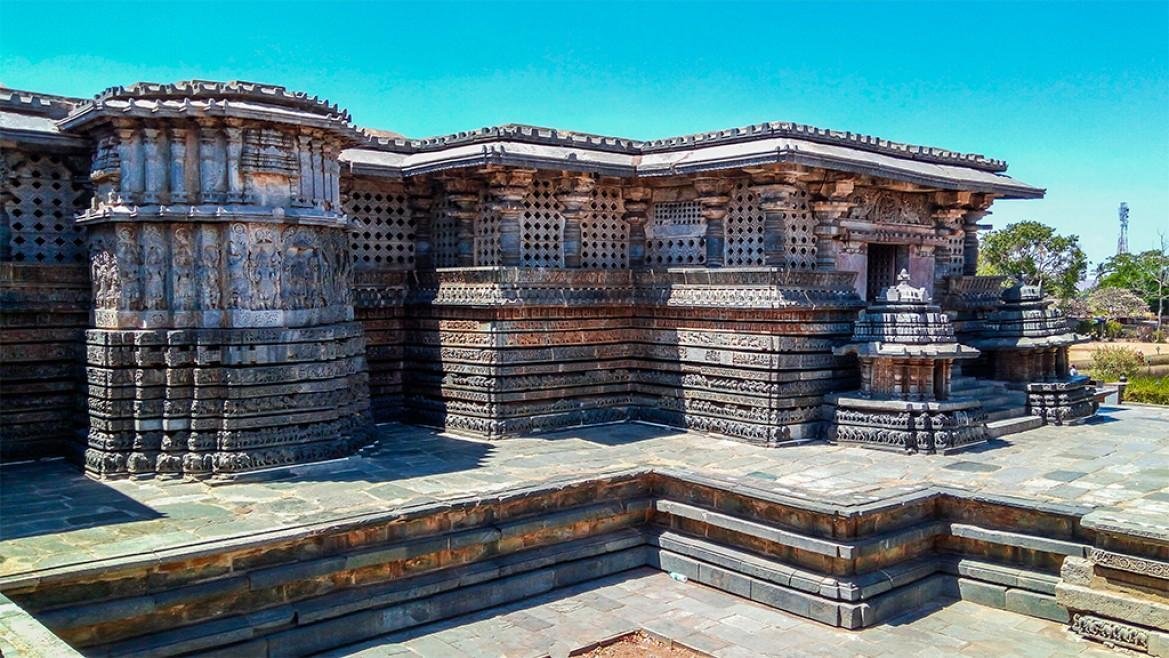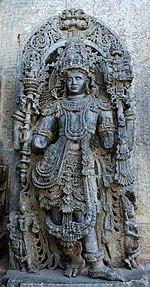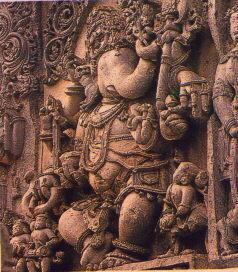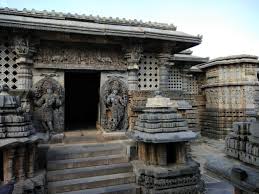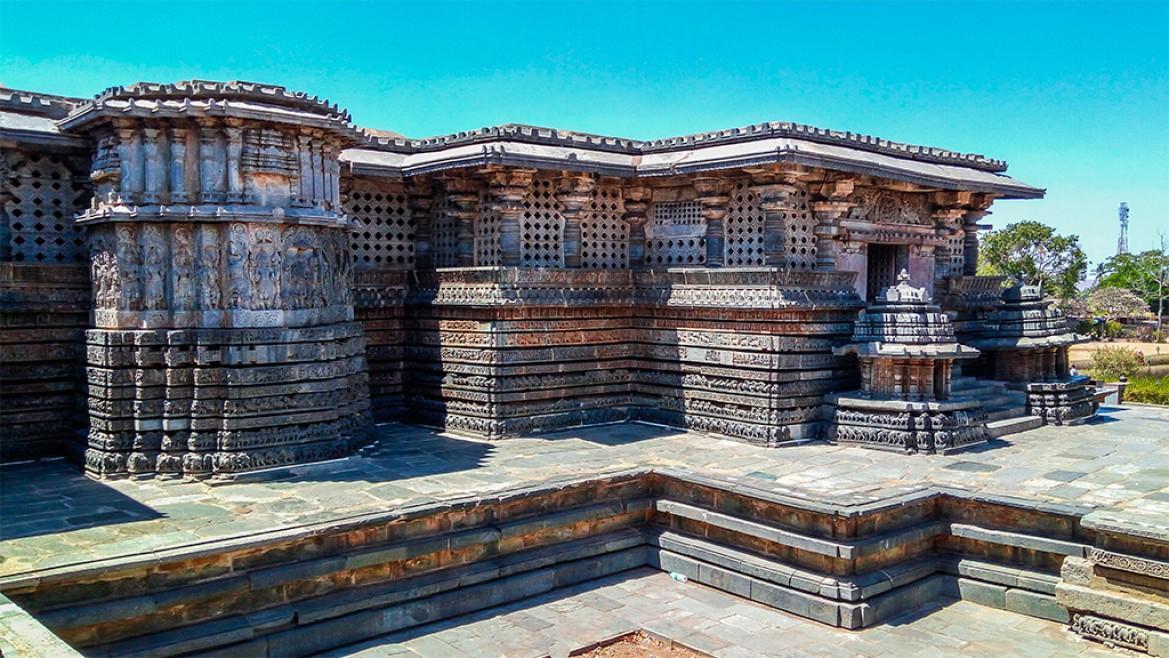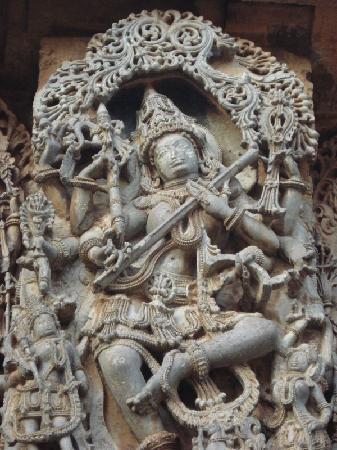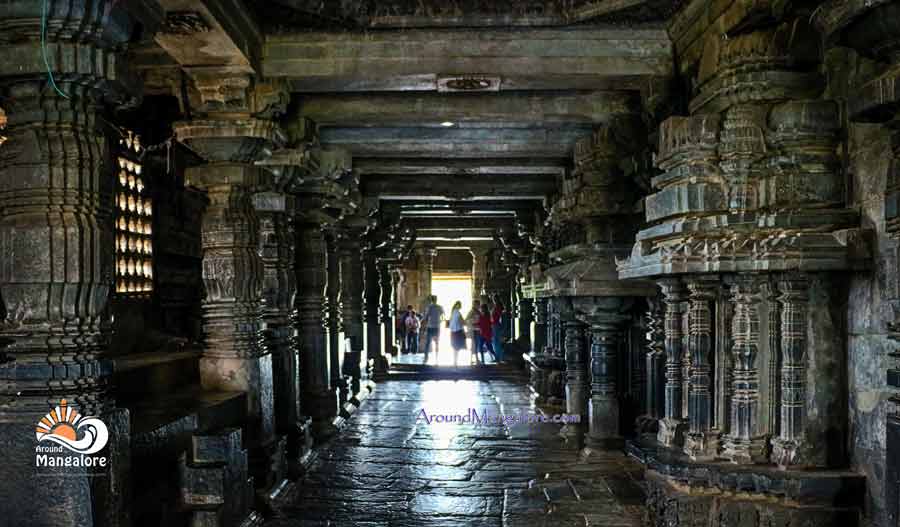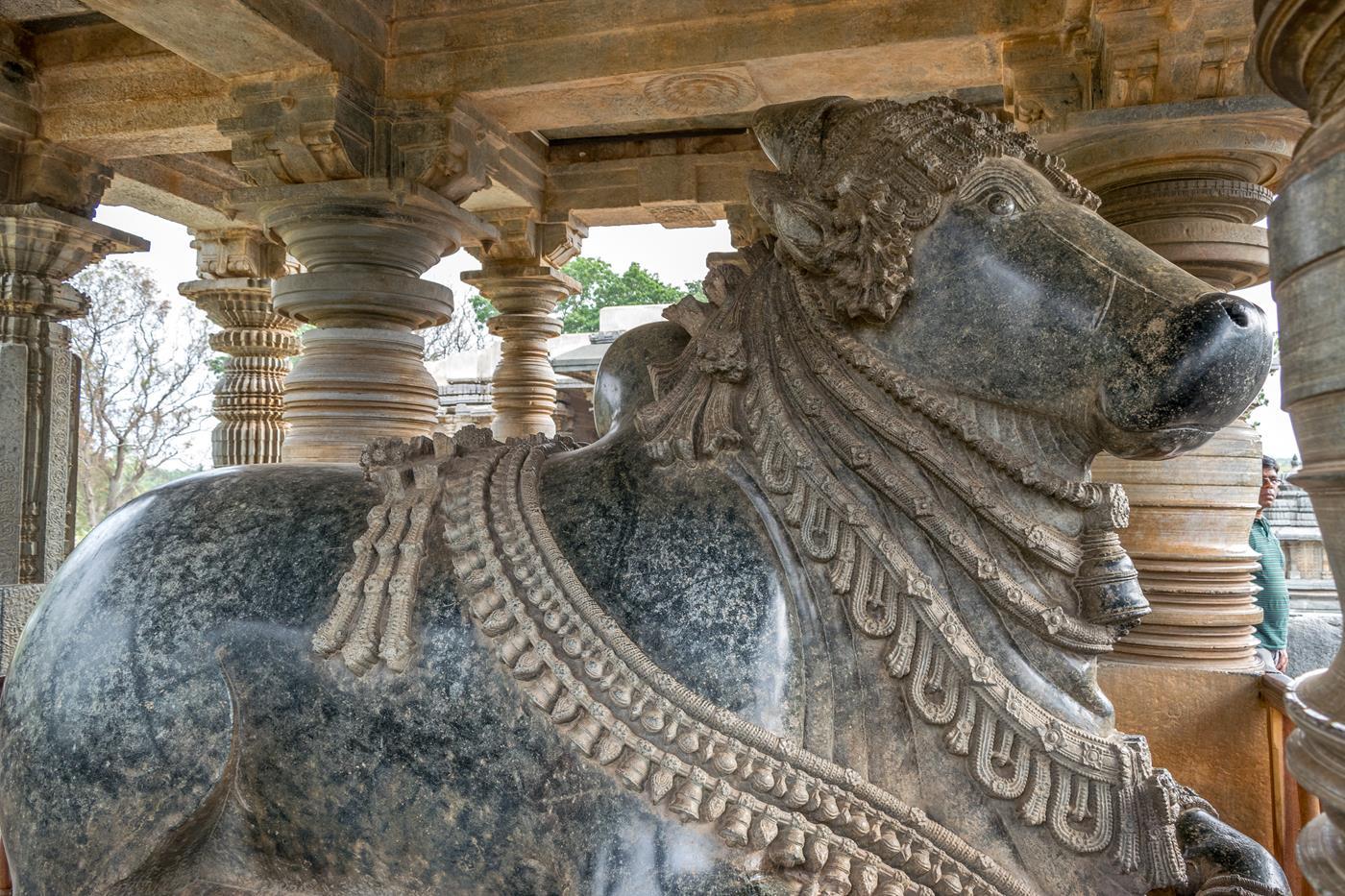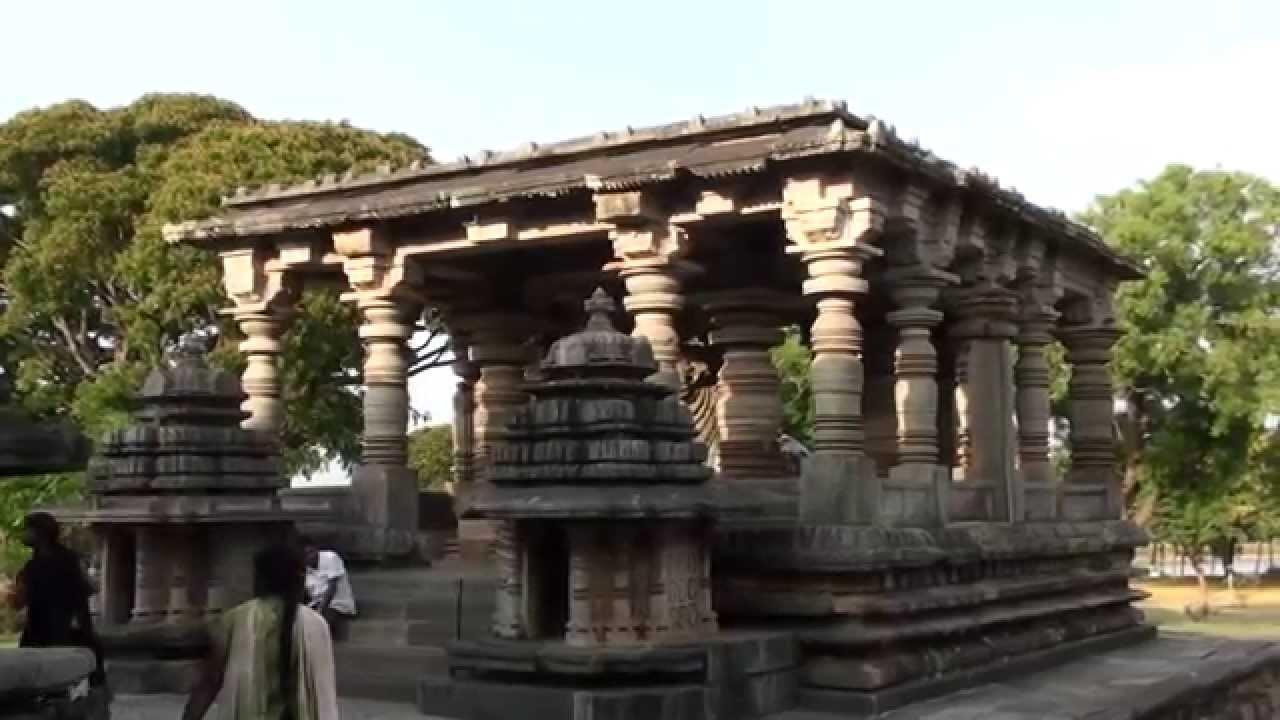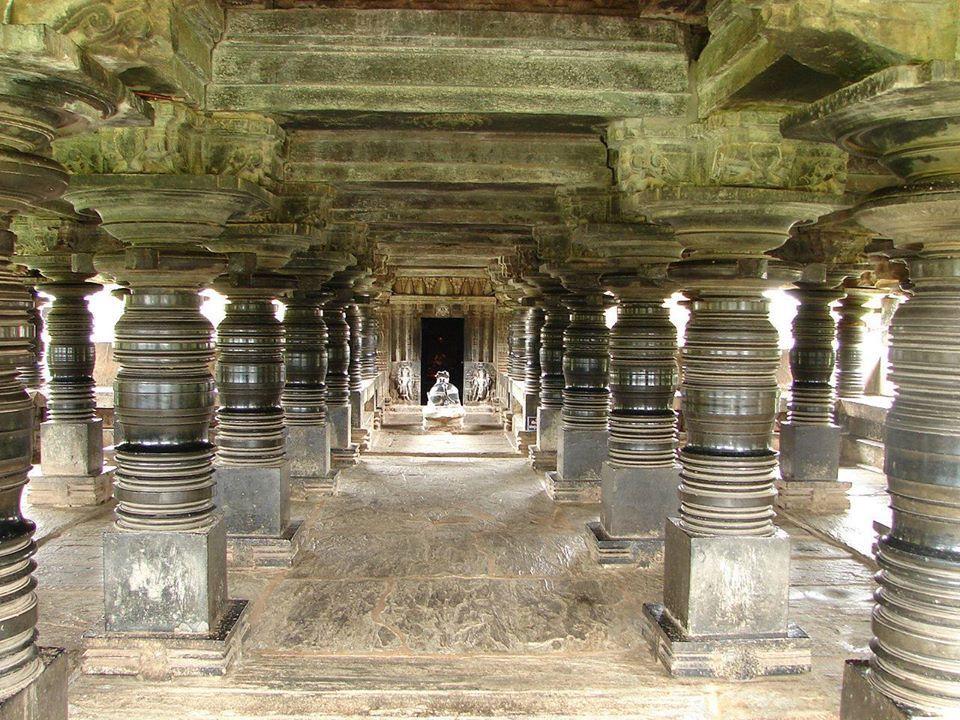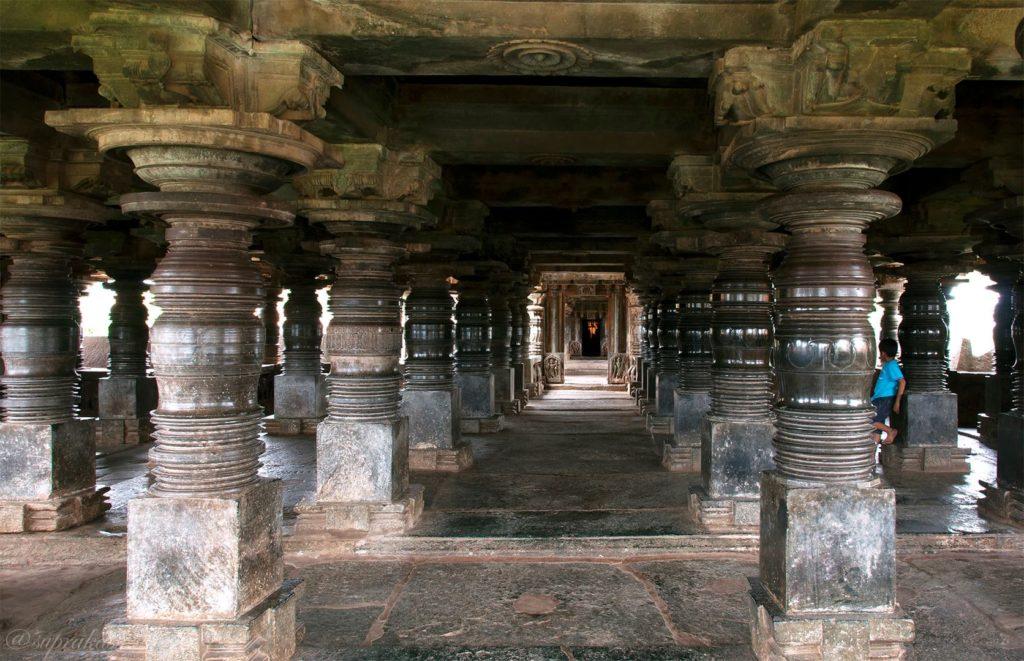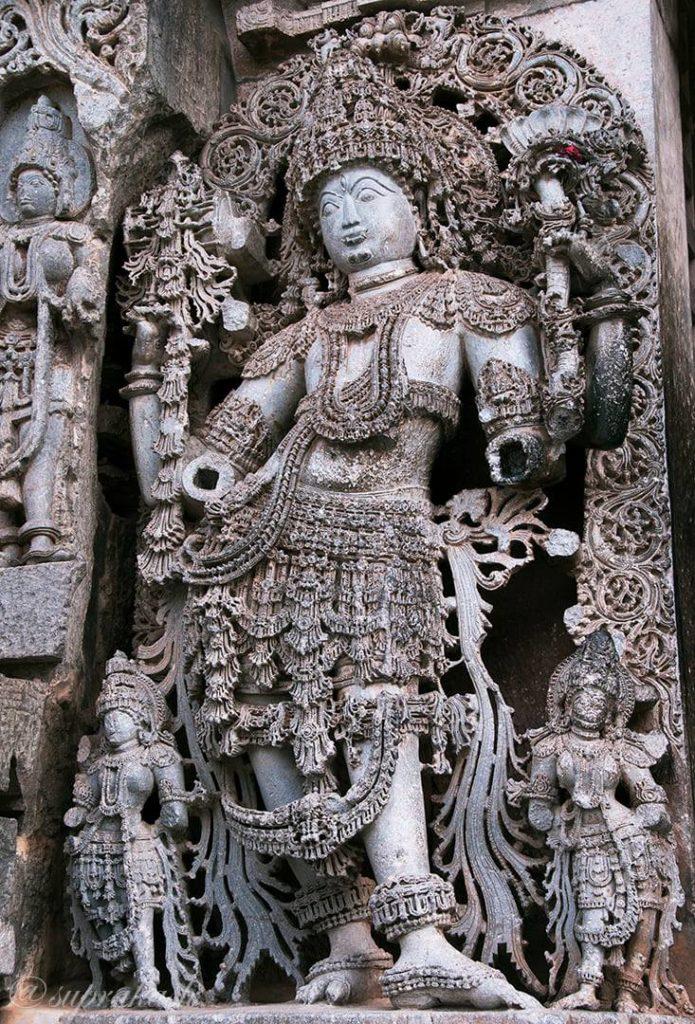Contents
Hoysaleswara Temple, Hassan, karnataka
| Date built: | 12th-century |
|---|---|
| Deity: | – |
| Architectural style: | Hoysala |
| Major festivals | – |
| Locale: | Halebidu |
| District:: | Hassan |
| Address: | Halebeedu, Karnataka 573121 |
| Phone | – |
Hoysaleswara temple, also referred simply as the Halebidu temple, is a 12th-century Hindu temple dedicated to Shiva. It is the largest monument in Halebidu, a town in the state of Karnataka, India and the former capital of the Hoysala Empire. The temple was built on the banks of a large man-made lake, and sponsored by King Vishnuvardhana of the Hoysala Empire. Its construction started around 1121 CE and was complete in 1160 CE. During the early 14th century, Halebidu was twice sacked and plundered by the Muslim armies of Delhi Sultanate from northern India,and the temple and the capital fell into a state of ruin and neglect. It is 30 kilometres (19 mi) from Hassan city and about 210 kilometres (130 mi) from Bengaluru.
The Hoysaleswara temple is a Shaivism tradition monument, yet reverentially includes many themes from Vaishnavism and Shaktismtradition of Hinduism, as well as images from Jainism.[9] The Hoysaleswara temple is a twin-temple dedicated to Hoysaleswara and Santaleswara Shiva lingas, named after the masculine and feminine aspects, both equal and joined at their transept. It has two Nandi shrines outside, where each seated Nandi face the respective Shiva linga inside. The temple includes a smaller sanctum for the Hindu Sun god Surya. It once had superstructure towers, but no longer and the temple looks flat.The temple faces east, though the monument is presently visited from the north side. Both the main temples and the Nandi shrines are based on a square plan.The temple was carved from soapstone. It is notable for its sculptures, intricate reliefs, detailed friezes as well its history, iconography, inscriptions in North Indian and South Indian scripts. The temple artwork provides a pictorial window into the life and culture in the 12th century South India. About 340 large reliefs depict the Hindu theology and associated legends. Numerous smaller friezes narrate Hindu texts such as the Ramayana, the Mahabharata and the Bhagavata Purana. Some friezes below large reliefs portray its narrative episodes.
The artwork in Hoysaleswara temple is damaged but largely intact. Within a few kilometers of the temple are numerous ruins of Hoysala architecture. The temple along with the nearby Jain Temples and the Kedareshwara temple, along with the Kesava temple in Belur have been proposed to be listed under UNESCO World Heritage Sites.
Architecture
Legend / Local stories
The Hoysala period of South Indian history began about 1000 CE and continued through 1346 CE. In this period, they built around 1,500 temples in 958 centres. Halebidu was originally called Dvarasamudra (or Dorasamudra), a name derived from two Sanskrit words “Dvara” (gateway, door) and Samudra (ocean, sea, large water body). The capital used to be Belur, Karnataka, but Dvarasamudra became the established capital under king Vishnuvardhana and served as the capital of the Hoyasala Empire for nearly 300 years.
Unlike other Hoysala temples that have survived into the modern age, and despite numerous inscriptions in the temple premises, the Hoysaleswara Temple lacks a dedication inscription. It is likely lost, along with the many other features of the original temple. An inscription found about five kilometers from the temple site, near the Kallesvara temple ruins in Ghattadahalli, states that Ketamalla – officer in the employ of king Vishnuvardhana constructed this temple. It also notes that the king made grant of lands to support the construction, the operation and the maintenance of the Shiva temple in Saka 1043, or 1121 CE. It was not the only temple built in that era. The inscriptions suggest that the capital consisted of numerous other temples, both of Hinduism and Jainism traditions, along with stepwells, ponds and mantapas (mandapas, public halls) in the vicinity of the large Dorasamudhra lake.Evidence within the temple suggest that the temple was reconstructed and repaired over its history, sometimes for enhancements, sometimes to address structural issue with the towers above it (now missing), and sometimes after wars with the remains of ruined temples elsewhere in the region.It is the largest temple built by the Hoysalas that is dedicated to the Hindu god Shiva in South India.
The Hoysala Empire and its capital Dvarasamudra was invaded, plundered and destroyed in early 14th century by the Delhi Sultanatearmies of Alauddin Khilji, with Belur and Halebidu becoming the target of plunder and destruction in 1326 CE by another Delhi Sultanate army of Sultan Muhammad bin Tughlaq.The territory was taken over by the Vijayanagara Empire.The Hoysala style, states James C. Harle, came to an end in mid 14th century, when King Ballala III was killed in a war with the Muslim army led by Malik Kafur. Dvarasamudra and its temples became ruins, the capital abandoned and the site became known as “Halebidu” (literally, “old camp or capital”).About 300 of the original Hoysala Empire temples survive in different states of damage, scattered around the Halebid region. Of these, states Hardy, about 70 had been studied to varying degrees of detail by 1995.
Photo Gallery
How to Reach:
The Hoysaleswara Temple is in Halebidu, also called Halebeedu, Halebid, Dorasamudra. Halebidu is a town in Hassan district of the Indian state of Karnataka. It is about 30 kilometres (19 mi) northwest of Hassan. The temple is about 16 kilometres (9.9 mi) from Belur, Karnataka temples.Halebidu has no nearby airport, and is about 210 kilometres (130 mi) west of Bengaluru (IATA Code: BLR), about 4 hours drive accessible with a four lane NH75 highway through Hassan. Halebidu is connected by railway network at Hassan to major cities of Karnataka.
Interesting Questions / Tales
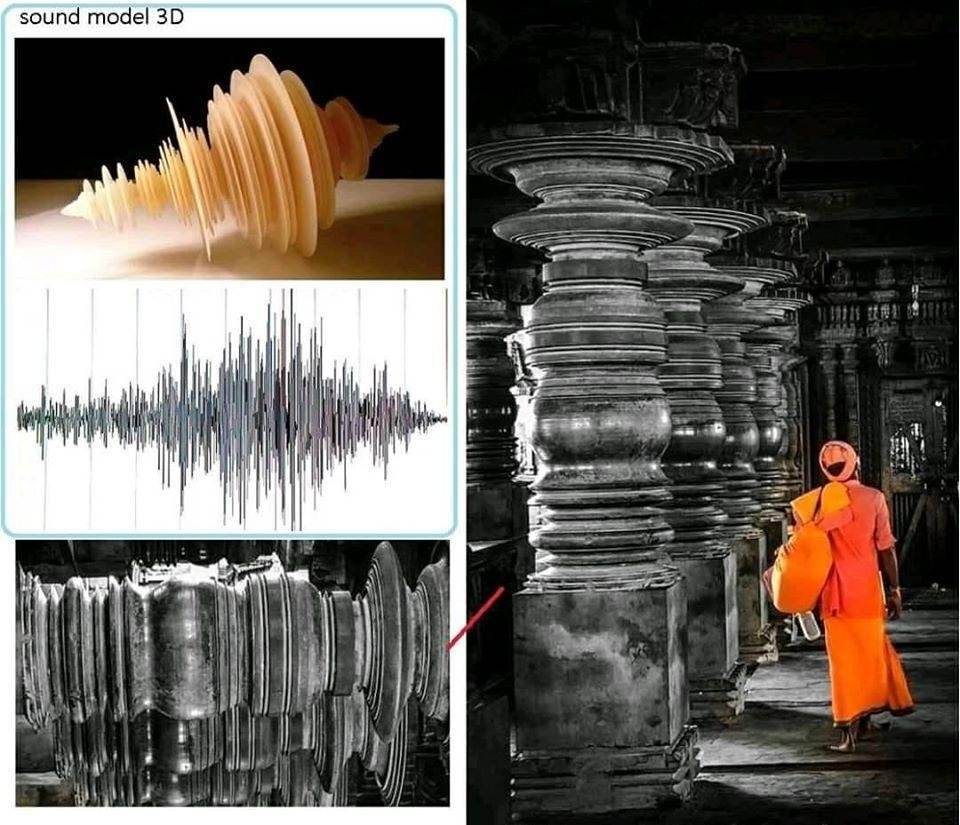
Contact Details
Official Address

